Visitors to the Veneto cannot miss, alongside the usual tour of the most important cities of art, a visit to the walled cities in Veneto which were the stage of memorable battles, and decisive for the history of this territory.
Today in many areas of the Veneto you can still see the vestiges of a glorious and bellicose past, marked by conflicts between the most important Signories: the Carraresi of Padua, the Scaligeri of Verona and the di Camino of Treviso. With the birth of the Signories, at the beginning of the 14th century, came also the attempts to conquer other cities and extend their territories by the noble families that governed them. For this reasons the towns situated in strategic points or with a particularly thriving economy were walled to protect them from attack.
Today the majority of walled cities in the Veneto are still perfectly preserved and allow the visitor to immerge herself in the medieval atmosphere and really see the history of the Veneto region for himself.
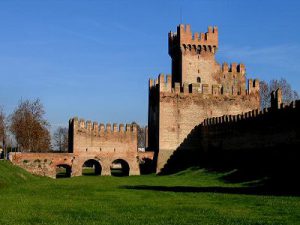
One of the best preserved walled cities in the Veneto. Its walls, interspersed with 24 towers, date from the 14th century. We recommend a visit to the Cathedral of Santa Maria Assunta and the Museo Civico, housed in the Castle of San Zeno. In September the town hosts a famous Palio, where the medieval atmosphere is recreated with games and costumes. A taste of the famous local “prosciutto crudo” (Protected Designation of Origin).
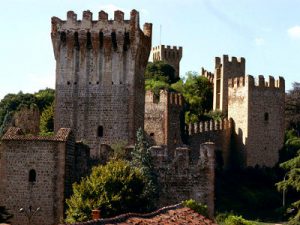
Evidence of a settlement already existed in the Iron Age, but it is from the 1st century A.D. that Este became a large inhabited centre, when it became a Roman colony. The castle was built in 1056 at the request of the Estensi family, and it is still today a public garden which in Spring each year hosts an important Flower Festival. You cannot miss the Museo Nazionale Atestino, which has finds from the Paleoveneto age, such as the famous Benvenuti Situla.
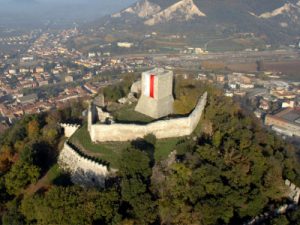
The small town, partially perched on a high hill, has been inhabited since the Bronze Age and owing to its strategic role it was fortified in the byzantine age, in the 5th or 6th century A.D. The current wall dates from the 14th century, when Monselice was fought over by the Carraresi and Cangrande della Scala. We recommend a visit to the Castle, originally built in 1000 and extended in the 13th century by Ezzelino III da Romano.
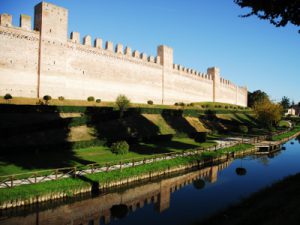
It is among the largest and better preserved walled cities in Veneto, was fortified in 1220. This was also quarrelled over by the Scaligeri and Carraresi families, and in the end it remained the dominion of the latter. In 1406 Cittadella came under the control of the Republic of Venice, but after the rebellion against the Serenissima led by Pandolfo Malatesta, who governed it in 1508, it was attacked by imperial troops until peace was declared in 1516
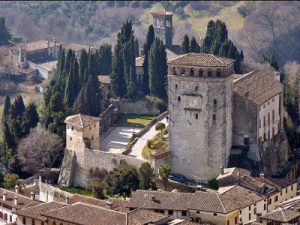
The remains of prehistoric settlements and Roman ruins, such as the aqueduct, are also preserved in Asolo. It was an Episcopal see until 949 and like other walled cities in Veneto, was the subject of a dispute between the great Signories. With Venetian domination, starting from 1300, Asolo experienced a period of great splendour thanks in particular to the patronage of Caterina Cornaro, who was head of the town and who knew how to create a flourishing literary and artistic environment. In addition to the medieval town, a visit to the Castle, Museo Civico and the Cathedral is a must.
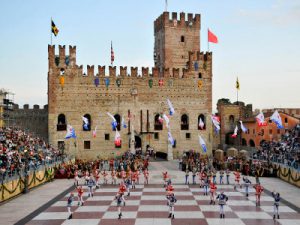
In this town you can still breathe the folklore of times past. Every even year a game of chess with real people as the pieces is organised, which according to tradition commemorates the game played in 1454 between two gentlemen who competed for the hand of a lady. In addition to this event Marostica is famous for the antique markets held every first Sunday of the month and for the cherry festival: the cherries grown here are particularly tasty.
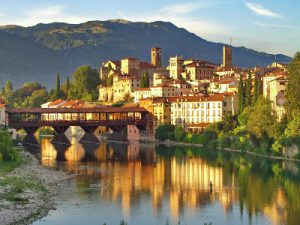
Located northward of Vicenza, Bassano is a nice village with a turbulent past. It underwent a considerable bloom during the four-century venetian dominion, which granted it a remarkable development in art and industry. In the 1st and 2nd World War it was bombed several times and then built up again. The city centre focuses around the wide Piazza della Libertà, not far from this you will find the famous Alpini Bridge ( “Alpini” meaning the Alpine troops). The typical local products are grappa (a very strong and clear spirit derived from grapes) and white asparagus.
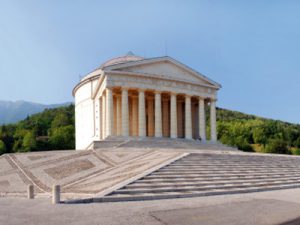
After visiting Bassano, we recommend a short break in this small town, which is known for being the hometown of the illustrious sculptor and painter Antonio Canova, whose masterpieces are exposed in the most famous museums of the world. His funeral monument, the Tempio Canoviano, is the main attraction of Possagno, together with the Museum Gipsoteca where several reproductions of hiws works are stored.